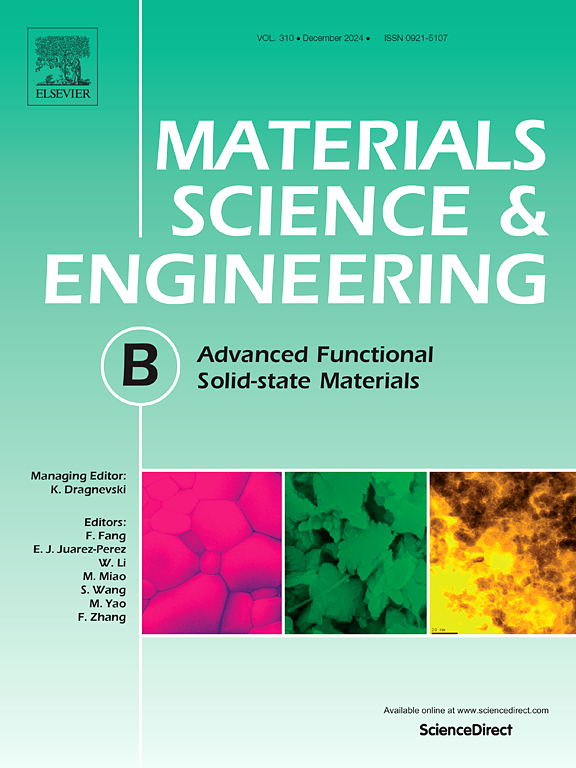Cu/TiO2纳米片和Cu/H2Ti3O7纳米棒作为甲苯选择性氧化制苯甲醛催化剂的合成与表征
IF 4.6
3区 材料科学
Q2 MATERIALS SCIENCE, MULTIDISCIPLINARY
引用次数: 0
摘要
成功合成了Cu/TiO2纳米片(Cu/TNS)和Cu/H2Ti3O7纳米棒(Cu/TNR)催化剂,并将其应用于甲苯的选择性氧化。对催化剂的结构、形态和织构性能进行了表征。Cu/TNS为锐钛矿结构,而Cu/TNR为钛酸盐结构。铜纳米颗粒均匀分布在两种催化剂表面。铜浸渍导致纳米片的粒径减小,而纳米棒的粒径增大。用H2O2氧化甲苯评价了其催化活性。催化性能评价表明,Cu/TNS具有较高的甲苯转化率(63.9%)和苯甲醛选择性(30.0%),Cu/TNR具有较低的甲苯转化率(43.4%)和较高的选择性(17.0%)。与纳米棒相比,Cu/TNS具有更大的表面积、更小的粒径和更高的酸度。这些发现强调了Cu/TiO2催化剂在选择性甲苯氧化中的潜力,纳米片是优化转化和选择性的有希望的候选物。本文章由计算机程序翻译,如有差异,请以英文原文为准。

Synthesis and characterization of Cu/TiO2 nanosheets and Cu/H2Ti3O7 nanorods as catalysts in selective oxidation of toluene to benzaldehyde
Catalysts Cu/TiO2 nanosheets (Cu/TNS) and Cu/H2Ti3O7 nanorods (Cu/TNR) were successfully synthesized and applied for selective oxidation of toluene. Characterization were employed for the catalysts’ structural, morphological, and textural properties. Cu/TNS exhibited an anatase, while Cu/TNR had a titanate structure. Cu nanoparticles were uniformly dispersed on the surface of both catalysts. Cu impregnation resulted in a decrease in particle size for nanosheets but an increase in particle size for nanorods. The catalytic activity was assessed through toluene oxidation with H2O2. Catalytic performance evaluation showed that Cu/TNS exhibited the higher toluene conversion (63.9%) and benzaldehyde selectivity (30.0%), while Cu/TNR displayed lower conversion (43.4%) but higher selectivity (17.0%). The enhanced performance of Cu/TNS is attributed to their larger surface area, smaller particle size, and higher acidity compared to nanorods. These findings highlight the potential of Cu/TiO2 catalysts for selective toluene oxidation, with nanosheets being a promising candidate for optimizing conversion and selectivity.
求助全文
通过发布文献求助,成功后即可免费获取论文全文。
去求助
来源期刊

Materials Science and Engineering: B
工程技术-材料科学:综合
CiteScore
5.60
自引率
2.80%
发文量
481
审稿时长
3.5 months
期刊介绍:
The journal provides an international medium for the publication of theoretical and experimental studies and reviews related to the electronic, electrochemical, ionic, magnetic, optical, and biosensing properties of solid state materials in bulk, thin film and particulate forms. Papers dealing with synthesis, processing, characterization, structure, physical properties and computational aspects of nano-crystalline, crystalline, amorphous and glassy forms of ceramics, semiconductors, layered insertion compounds, low-dimensional compounds and systems, fast-ion conductors, polymers and dielectrics are viewed as suitable for publication. Articles focused on nano-structured aspects of these advanced solid-state materials will also be considered suitable.
 求助内容:
求助内容: 应助结果提醒方式:
应助结果提醒方式:


